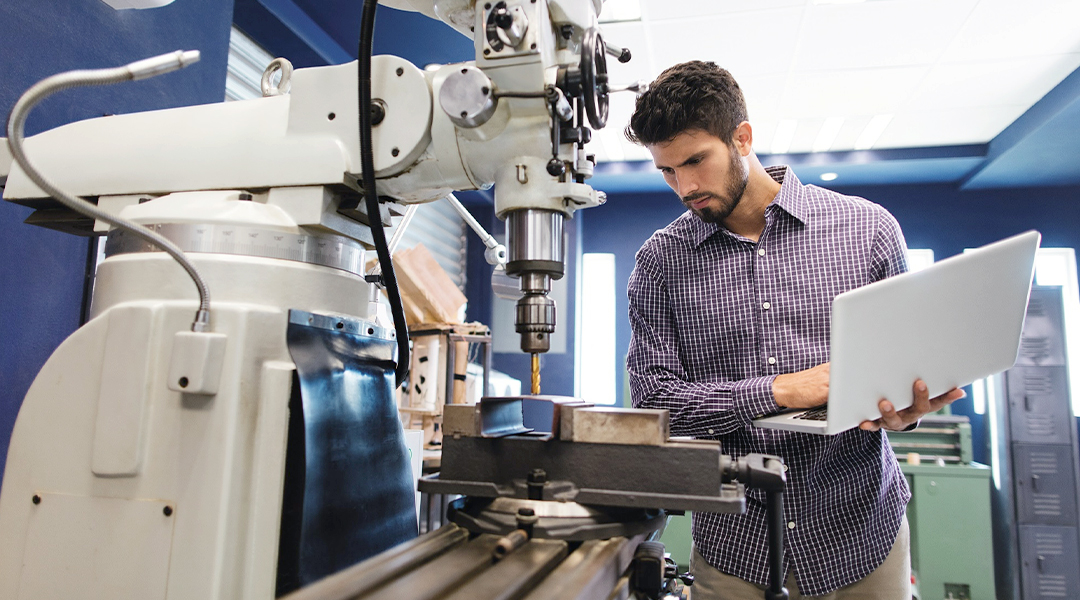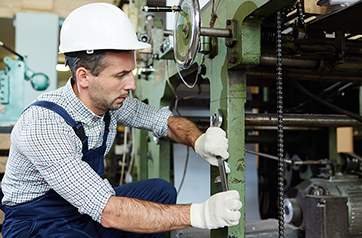The manufacturing industry is constantly evolving, driven by technological advancements that enhance efficiency in various sectors, including metal manufacturing and food processing equipment maintenance. As machinery becomes more sophisticated, so do the techniques and technologies used to maintain their optimal performance, extending their lifespan and ensuring a safe working environment.
In this blog, we will discuss six innovative technologies that are transforming machinery maintenance in the manufacturing industry. These advancements provide a more proactive and precise approach to equipment care, enabling companies to operate more efficiently and drive their business to new levels of success. Stay ahead of the competition by keeping up with the latest maintenance technology trends designed to streamline processes, maximise machinery performance, and minimise downtime within your facility. Let’s delve into the world of cutting-edge technology that is reshaping machinery maintenance in the manufacturing sector.
1. Internet of Things (IoT) and Smart Sensors
IoT-enabled devices and smart sensors are revolutionising how machinery is monitored and maintained in the manufacturing sector. These sensors can be easily installed on equipment and communicate real-time data to a central system. This data enables maintenance teams to respond rapidly to issues that could hinder performance or cause unplanned downtime.
- By collecting and analysing this data, smart sensors and IoT technology can predict machine failures and recommend preemptive maintenance actions before they occur.
- This technology also provides valuable insight into machinery usage patterns, enabling companies to optimise processes and reduce energy consumption.
- A study by Deloitte found that manufacturers using IoT-enabled smart sensor technology saw a 10-20% reduction in maintenance costs and a 20-50% reduction in downtime.
2. Predictive Maintenance Techniques
Predictive maintenance (PdM) technology utilises sophisticated algorithms, machine learning, and real-time data analysis to anticipate equipment failures and take appropriate action proactively. This technology helps identify potential issues before they result in costly downtime or equipment damage.
- PdM techniques that leverage advanced analytics and machine learning can reduce maintenance costs by 5-10%, according to McKinsey & Company.
- Some technologies employed in PdM include vibration analysis, thermal imaging, ultrasonic inspection tools, and oil analysis, which provide valuable insights into machinery health.
- Adopting predictive maintenance practices enables companies to transition from reactive or scheduled maintenance approaches to a proactive, data-driven maintenance strategy.
3. Augmented Reality (AR) Technology
Augmented Reality (AR) technology is having a profound impact on machinery maintenance by enabling technicians to access real-time information quickly and improve their efficiency. AR overlays digital information onto the physical world using smart devices, such as smartphones or AR headsets.
- Technicians can use AR technology to visualise instructions and view 3D models while working on equipment, leading to shorter repair times and fewer human errors.
- AR can facilitate remote support and collaboration between on-site technicians and off-site experts, which helps address complex issues quickly and efficiently.
- A report by PwC suggests that the adoption of AR technology could save companies $1 billion in maintenance-related costs over the next decade.
4. Robotics and Cobots in Maintenance
Robotics and collaborative robots (cobots) are playing a vital role in improving machinery maintenance in manufacturing facilities. These advanced machines are designed to work alongside humans, taking on mundane, repetitive, or hazardous tasks and improving efficiency and safety within the workplace.
- Cobots can help technicians perform maintenance tasks in hard-to-reach or dangerous areas, reducing the risk of accidents and injuries.
- They can also assist in carrying out tasks requiring high precision, such as tightening bolts or applying lubricants, which minimises human error.
- Robotics and cobots in maintenance not only improve efficiency but also contribute to a reduced maintenance workforce demand, freeing up time for employees to focus on more critical tasks.
5. 3D Printing for Efficient Parts Replacement
3D printing, also known as additive manufacturing, is transforming the way replacement parts are produced for machinery maintenance. This technology enables on-demand manufacturing of customised parts, reducing lead times and associated costs.
- 3D-printed parts can be produced with a high degree of precision and customisation, ensuring the best fit for specific machinery and applications.
- By producing parts on-site, companies can significantly reduce downtime caused by waiting for replacement components.
- A study by the Spare Parts 3D manufacturing company found that adopting 3D printing technology could help reduce inventory costs by up to 80%.
6. Cloud-Based Maintenance Management Systems
The rise of cloud computing technology has paved the way for cloud-based maintenance management systems, which simplify maintenance operations and data collection across manufacturing facilities. These systems are accessible from any device, providing real-time insight into equipment performance and maintenance activities.
- Cloud-based platforms help optimise maintenance schedules, record data in a centralised location, and manage inventory effectively.
- Maintenance teams can access documentation, manuals, and work orders easily through a single online platform, enhancing collaboration and communication among staff members.
- By leveraging the power of cloud-based systems, manufacturers can streamline maintenance operations and reduce operational costs while minimising the reliance on physical servers and in-house IT infrastructure.
These emerging technologies play a pivotal role in enhancing the efficiency and effectiveness of machinery maintenance in the manufacturing industry. Manufacturers that embrace these advancements not only improve their equipment maintenance processes but also gain a competitive edge by optimising productivity and reducing downtime. The future of manufacturing maintenance depends on adopting these innovative solutions and continuously adapting to technological advancements.
Embrace the Future of Manufacturing Maintenance with Meng Solutions
Adopting innovative technologies is essential for maintaining peak performance and staying ahead in the manufacturing industry, particularly in metal manufacturing and food processing equipment maintenance. By embracing these cutting-edge technologies, companies can streamline maintenance processes, reduce downtime, and maximise the return on investment in machinery assets.
At Meng Solutions, we understand the value of staying informed and applying the latest advancements in maintenance practices. Partner with us to experience the benefits of innovative machinery maintenance and stay ahead in the competitive market. Contact Meng Solutions today to schedule a consultation and learn how our expertise can help you unlock your facility’s true potential.




